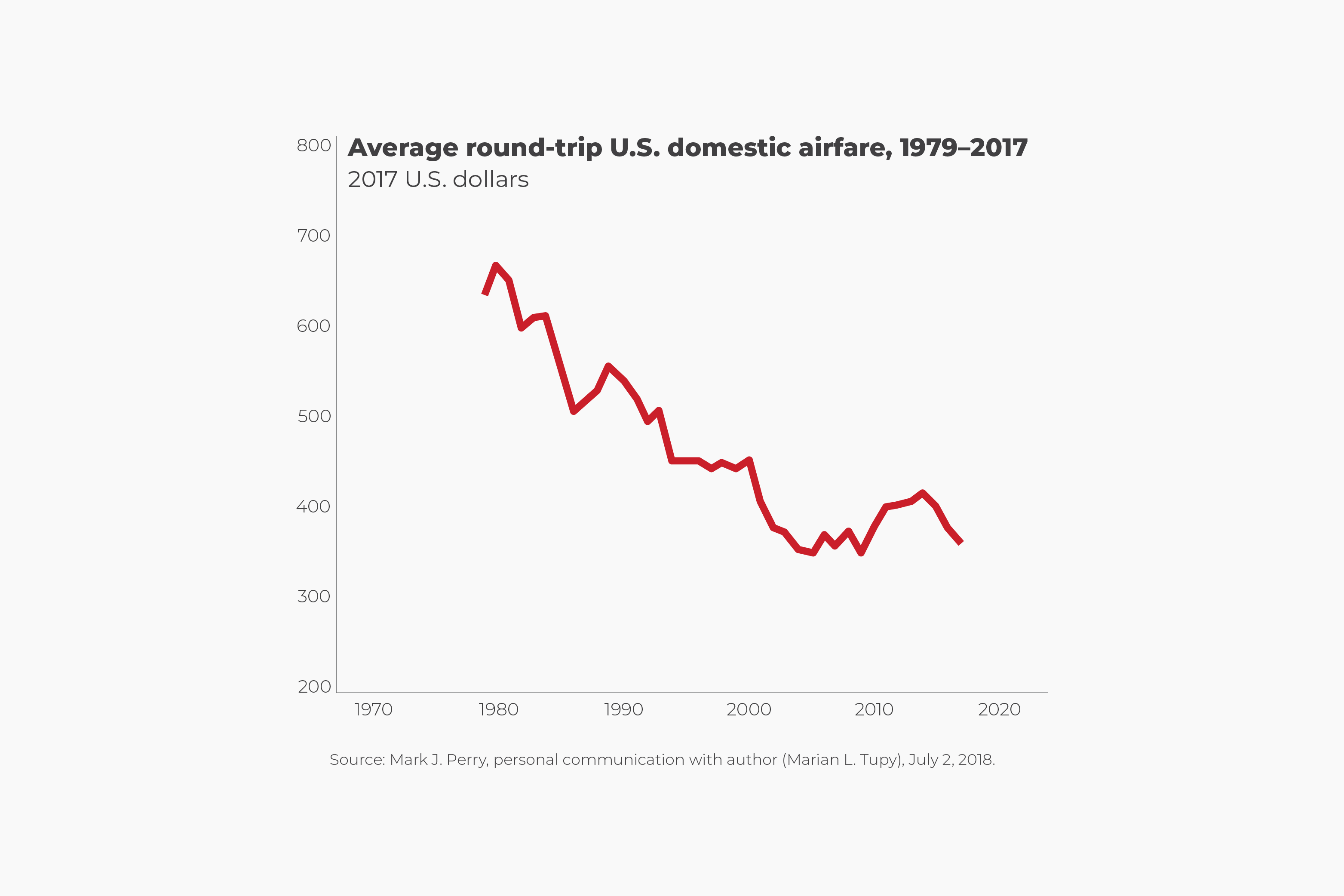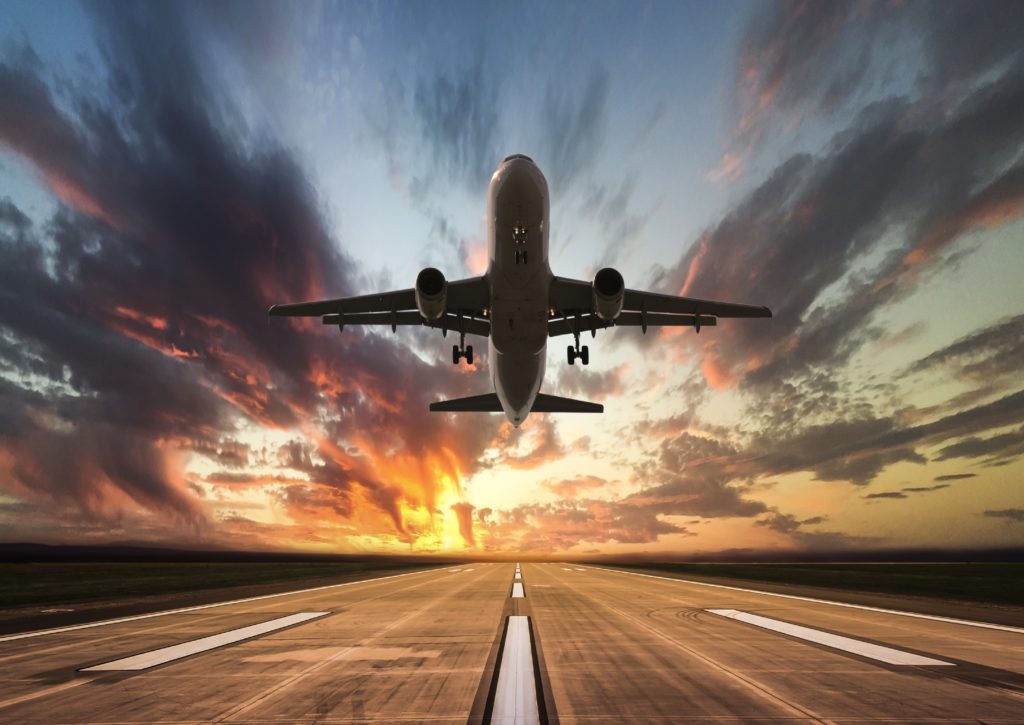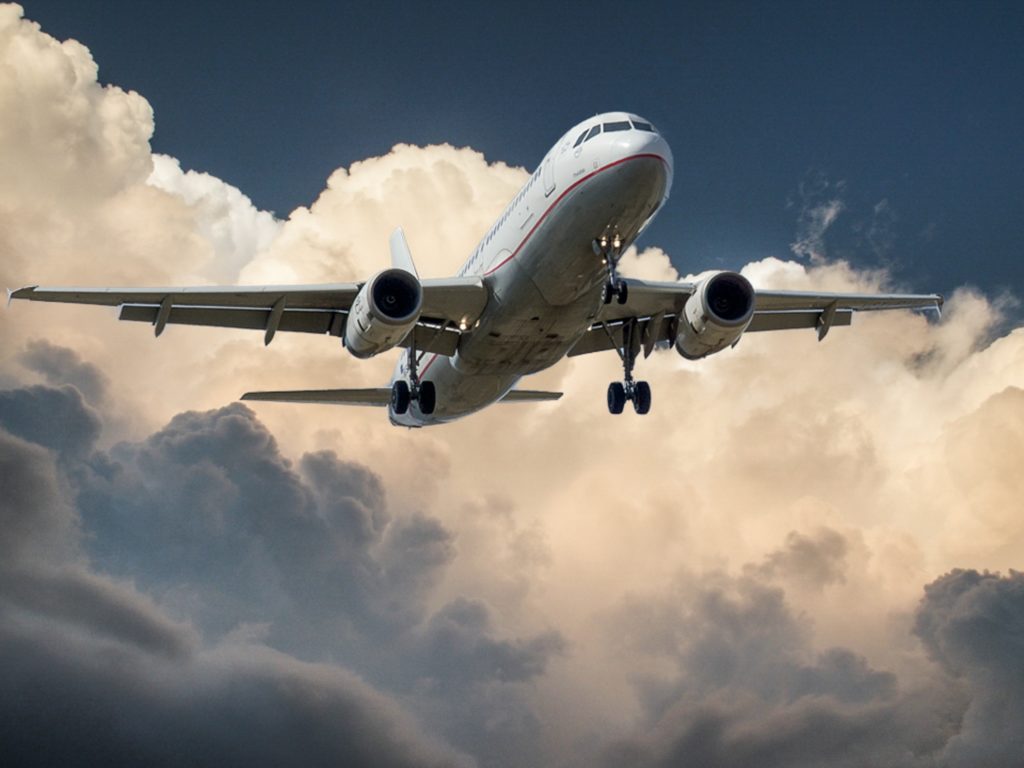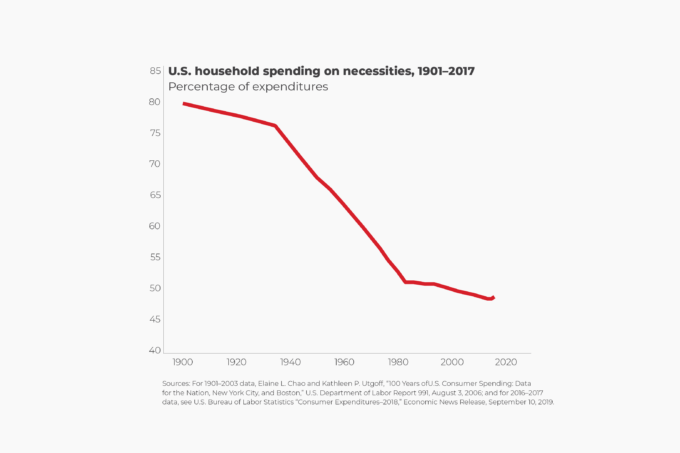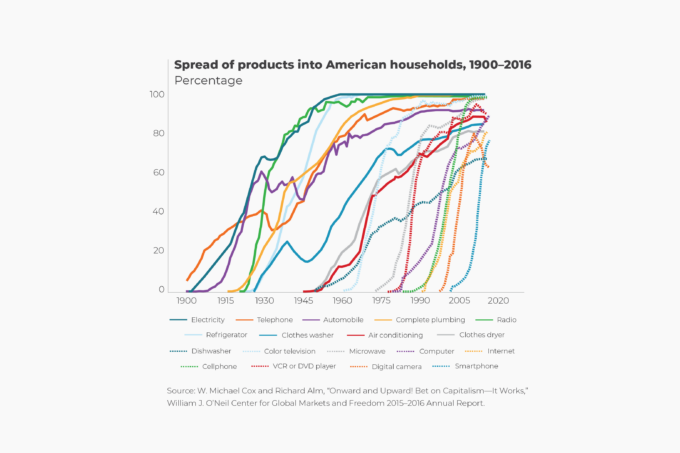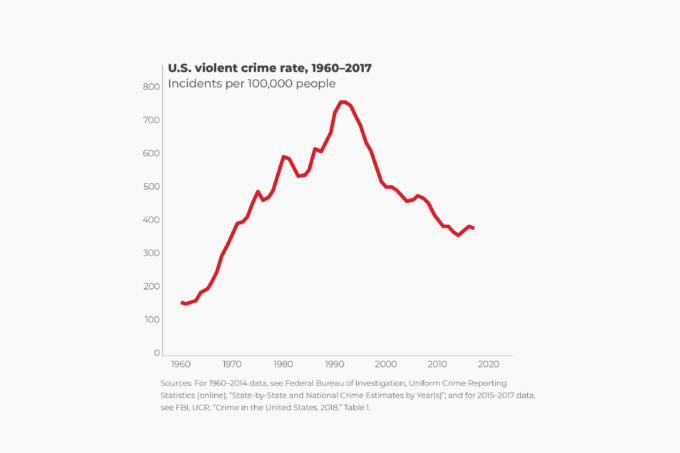The Airline Deregulation Act of 1978 began a process of liberalization of American air travel, which culminated in the dissolution of the Civil Aeronautics Board, a federal agency charged with setting the flight routes and fares of American airlines between 1939 and 1985.
Before deregulation, when they could not compete with one another by lowering their fares or by encroaching on each other’s territory, airlines competed on service alone. Back then, flying was a glamorous affair. It was characterized by plentiful food and drink, beautifully bedecked staff, and no extra charges. Today, it is fondly remembered as the “golden age of aviation.”
Consequently, flying was effectively restricted to the very rich. In 1955, to give a couple of examples, Trans World Airlines—a major American airline between 1930 and 2001—advertised one- way tickets from Boston to Los Angeles and from Pittsburgh to San Francisco for $1,000 and $907, respectively (figures are in 2018 dollars).
In the fall of 2018, Spirit Airlines offered the former route for $105 and the latter route for $137. Spirit, Frontier Airlines, JetBlue, and Southwest Airlines are a new breed of low-cost carriers. They arose after deregulation and specialize in no-frills mass transport that has democratized air travel. According to data compiled by Mark J. Perry from the University of Michigan at Flint, the average round- trip U.S. domestic airfare with fees fell from $631 in 1979 to $363 in 2017 (figures are in 2017 dollars).1 That’s a reduction of 43 percent.
- Mark J. Perry, personal communication with author (Marian L. Tupy), July 2, 2018.

